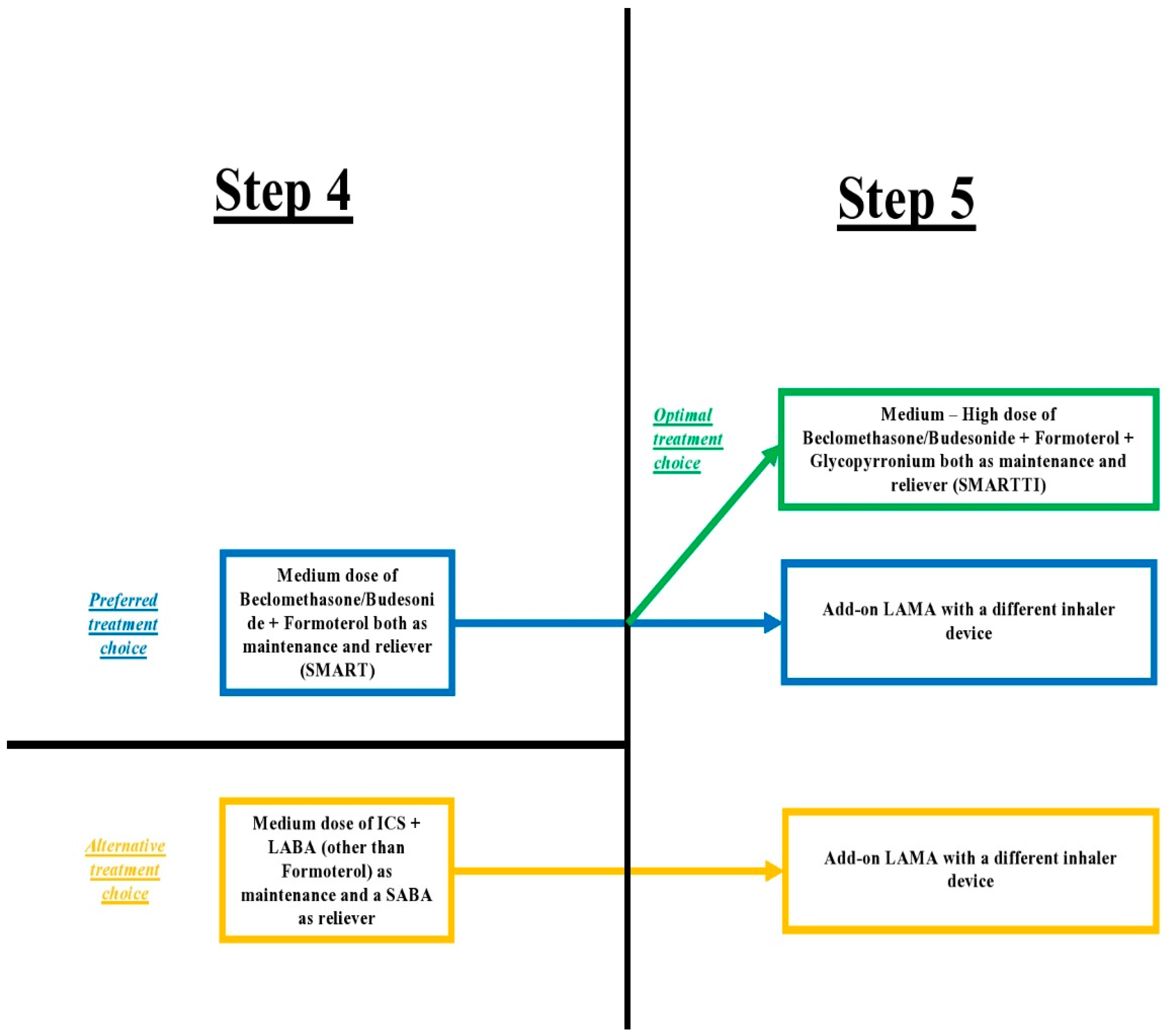Kotoulas SC, Tsiouprou I, Domvri K, Ntontsi P, Pataka A, Porpodis K. Adv Respir Med. 2023 Jul 4;91(4):288-300. doi: 10.3390/arm91040023.
Highlights
What are the main findings?
- The addition of a LAMA, for asthma symptoms and exacerbation control, in patients with persistent asthma, uncontrolled with medium or high dose ICS + LABA, is an effective treatment option;
- Multiple inhaler devices could be one of the reasons for suboptimal adherence because it is challenging for the patients to establish and sustain the correct technique for each inhaler.
What is the implication of the main finding?
- LAMAs should be used as an add-on treatment for the control of symptoms and exacerbations in patients with asthma that remains persistently uncontrolled despite treatment with ICS + LABA;
- The use of a singletriple inhaler simplifies the treatment in contrast to an open triple inhaler, and this fact could strengthen adherence.

Abstract
Long-acting muscarinic antagonists (LAMAs) are a class of inhalers that has recently been included as add-on therapy in the GINA guidelines, either in a single inhaler device with inhaled corticosteroids plus long-acting β2-agonists (ICS + LABA) (closed triple inhaler therapy) or in a separate one (open triple inhaler therapy). This review summarizes the existing evidence on the addition of LAMAs in patients with persistently uncontrolled asthma despite ICS + LABA treatment based on clinical efficacy in the reduction of asthma symptoms and exacerbations, the improvement in lung function, and its safety profile.
